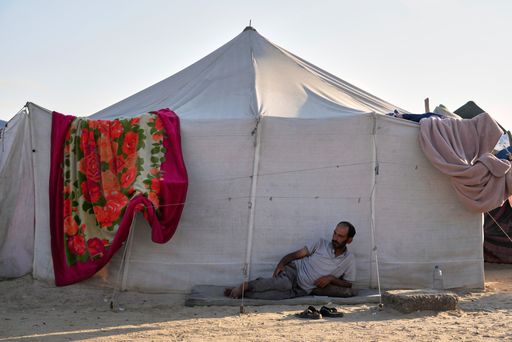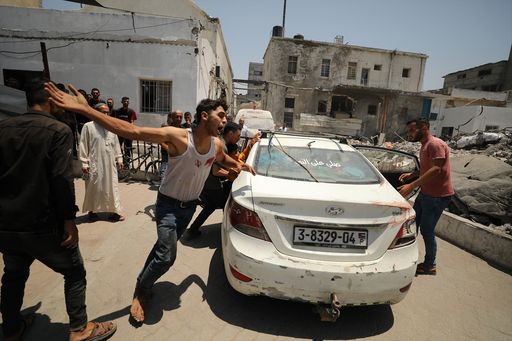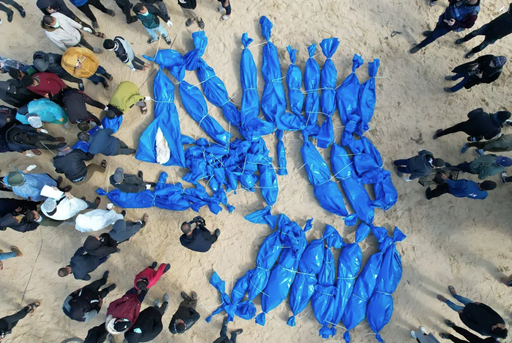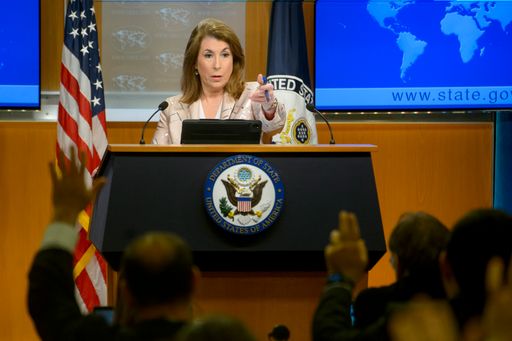US President Donald Trump said on Tuesday that Israel has agreed on terms for a new 60-day ceasefire with Hamas and that Washington would work with both sides during that time to try to end more than 20 months of Israel’s war on Gaza.
Neither side has officially accepted the proposal announced by Trump, who has warned Hamas that if the group does not buy into the offer, its prospects will get worse.
It is not clear what conditions Israel has agreed to.
The efforts to reach a truce are unfolding in the wake of Israeli and American strikes in Iran and a subsequent truce, and just days before Trump is scheduled to meet with Israeli Prime Minister Benjamin Netanyahu in Washington.
What is the ceasefire proposal?
Rather than being completely new, the potential ceasefire deal seems to be a somewhat modified version of a framework proposed earlier this year by Trump’s Middle East envoy, Steve Witkoff.
Trump said on Tuesday in a social media post that Qatar and Egypt have been working on the details and would deliver a final proposal to Hamas.

An Egyptian official involved in the ceasefire talks told The Associated Press that the proposal calls for Hamas to release 10 more hostages during the two-month period — eight on the first day and two on the final day.
During that period, Israel would withdraw troops from some parts of Gaza and allow desperately needed aid into the territory.
The Egyptian official, speaking on condition of anonymity, said a sticking point over how aid would be distributed had been resolved with Israel.
He said both sides have agreed that the United Nations and the Palestinian Red Crescent would lead aid operations and that the Israel-US-backed, controversial Gaza Humanitarian Foundation would also continue to operate.
Israel has said Hamas cannot run Gaza, and the Egyptian official said the proposal would instead put Gaza under a group of Palestinians without political affiliations known as the Community Support Committee once a ceasefire is reached.
Israel’s response
Israeli Foreign Minister Gideon Saar said the country was serious about reaching a deal with Hamas to end the war in Gaza and return the hostages held there to Israel.
Saar said, "We are serious in our will to reach a hostage deal and a ceasefire. We said yes to (US) special envoy (Steve) Witkoff’s proposals."

"There are some positive signs. I don’t want to say more than that right now. But our goal is to begin proximity talks as soon as possible."
Saar also said Hamas is responsible for both starting and continuing the war.
“Pressure must be applied to Hamas. The international community must now back the American initiatives. It must shatter any illusions that Hamas may have," he said.
Netanyahu’s threat
Israeli Prime Minister Benjamin Netanyahu, meanwhile, reiterated his hardline position on Wednesday, vowing that “there will be no Hamas” following the 60-day ceasefire plan. "There will not be a Hamas. There will not be a Hamastan. We're not going back to that. It's over," Netanyahu said.
Israeli leaders believe the deal would include a partial Israeli withdrawal from Gaza and a surge in humanitarian aid to the territory.
The Israeli government has not committed to peace talks as part of the proposal.
Hamas’s response
Hamas said it was studying the new ceasefire offers it received from mediators Egypt and Qatar, but stressed it aimed to reach an agreement that would ensure an end to the war and an Israeli pullout from Gaza.
A source close to Hamas said leaders of the group were expected to debate the proposal and seek clarifications from mediators before giving an official response.
Why now?
Trump has made it clear to Israel that he wants to see the Gaza war end soon.
While supportive of Netanyahu, Trump had tough words for Israel in the opening hours of last week's ceasefire with Iran, pressuring Israel to scale back its response to an Iranian missile attack.
That could help persuade Hamas to embrace a deal.

A US diplomat briefed on the talks said there is now a “big opportunity” to reach an agreement.
He said Trump’s harsh talk toward Israel has “given a bit of confidence to Hamas” that the US will guarantee any future deal and prevent a return to fighting.
Challenges
An Egyptian official said Israel has not yet agreed to withdraw its forces to positions held in early March after a previous ceasefire expired.
Since then, the Israeli army has seized large swathes of Gaza to put pressure on Hamas.
Previous ceasefires have failed to hold.
A ceasefire agreed to in January involved phases that never progressed beyond phase one, which saw some hostage exchanges and aid deliveries.
Phase two, which would have compelled Hamas to release all remaining hostages in exchange for Palestinian prisoners, a lasting ceasefire, and full Israeli withdrawal, never materialised.
Hostilities resumed on March 18 with new Israeli air strikes.
In Gaza, more than 57,000 Palestinians have been killed, most of them civilians, and almost the entire 2.3 million population has been displaced, leading to a severe humanitarian crisis.
Residents express hope the ceasefire might bring relief, with one saying, “We are seriously tired,” after enduring “every form of torture in the world”.




















